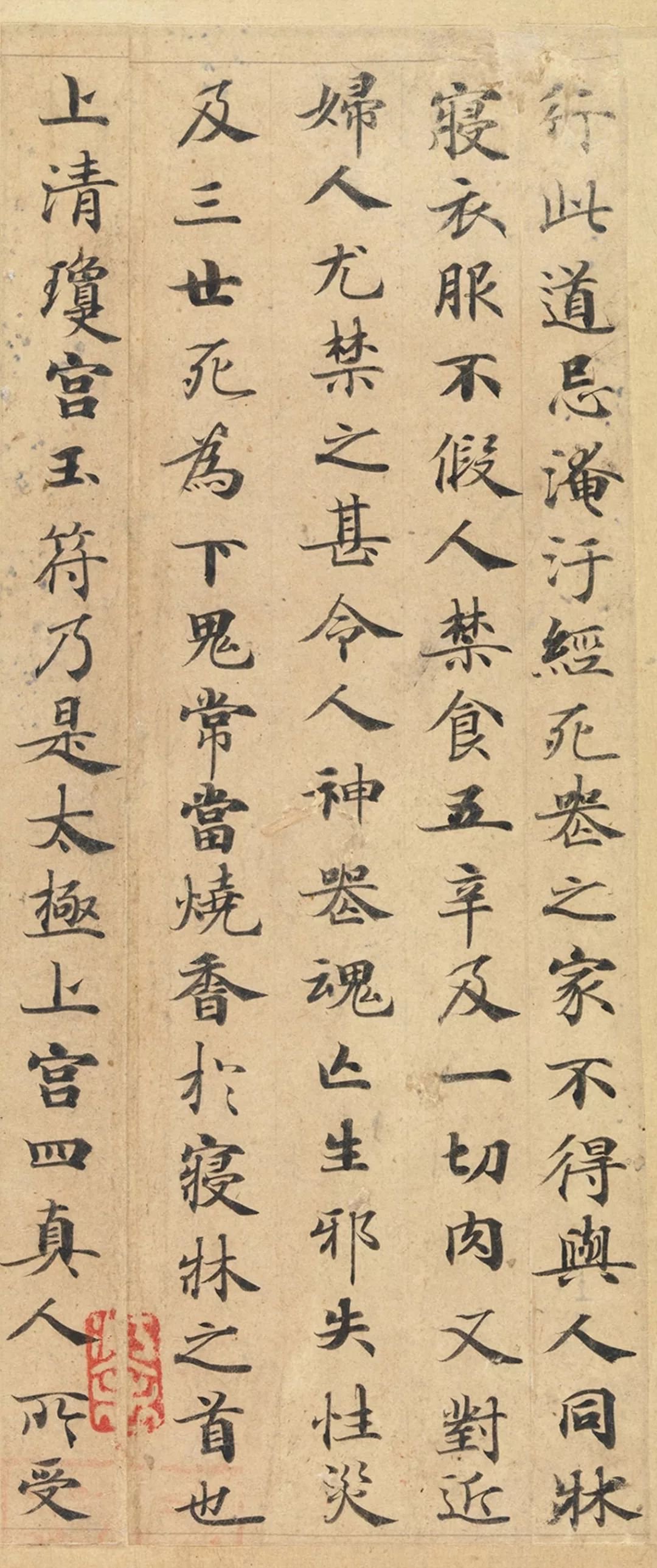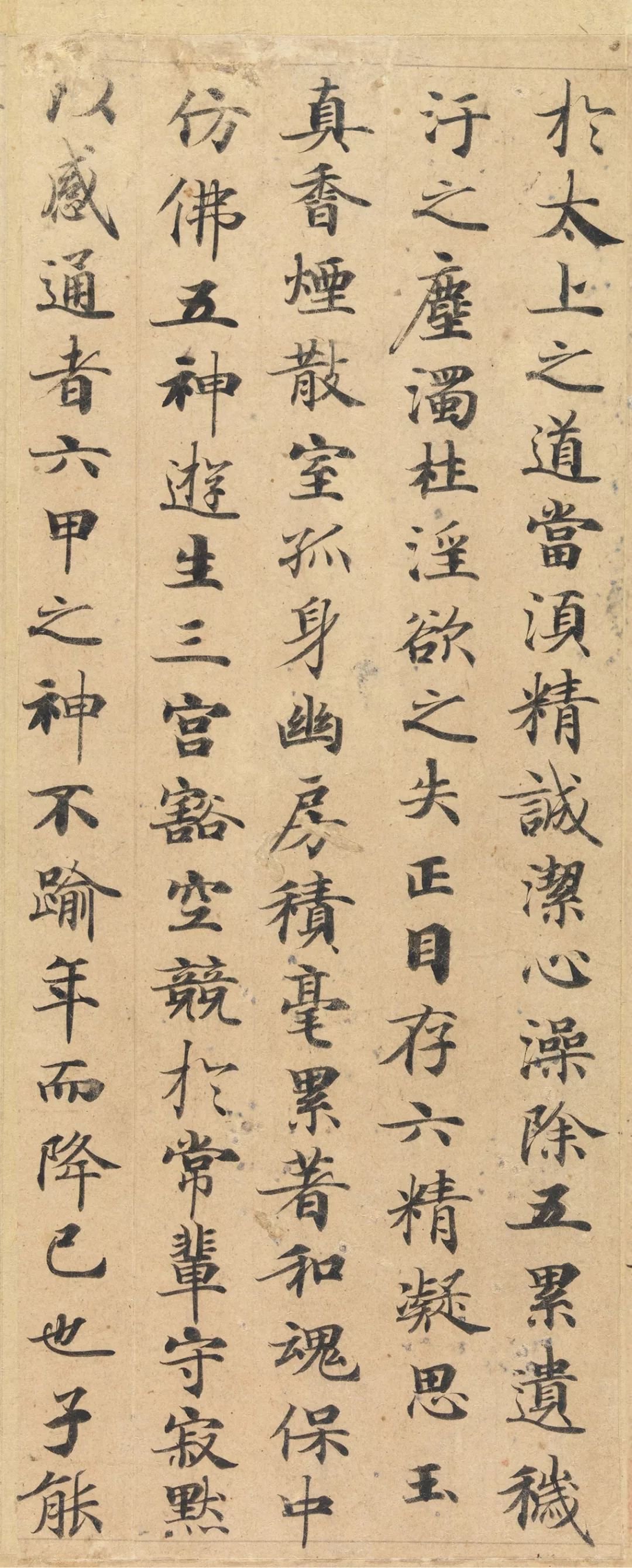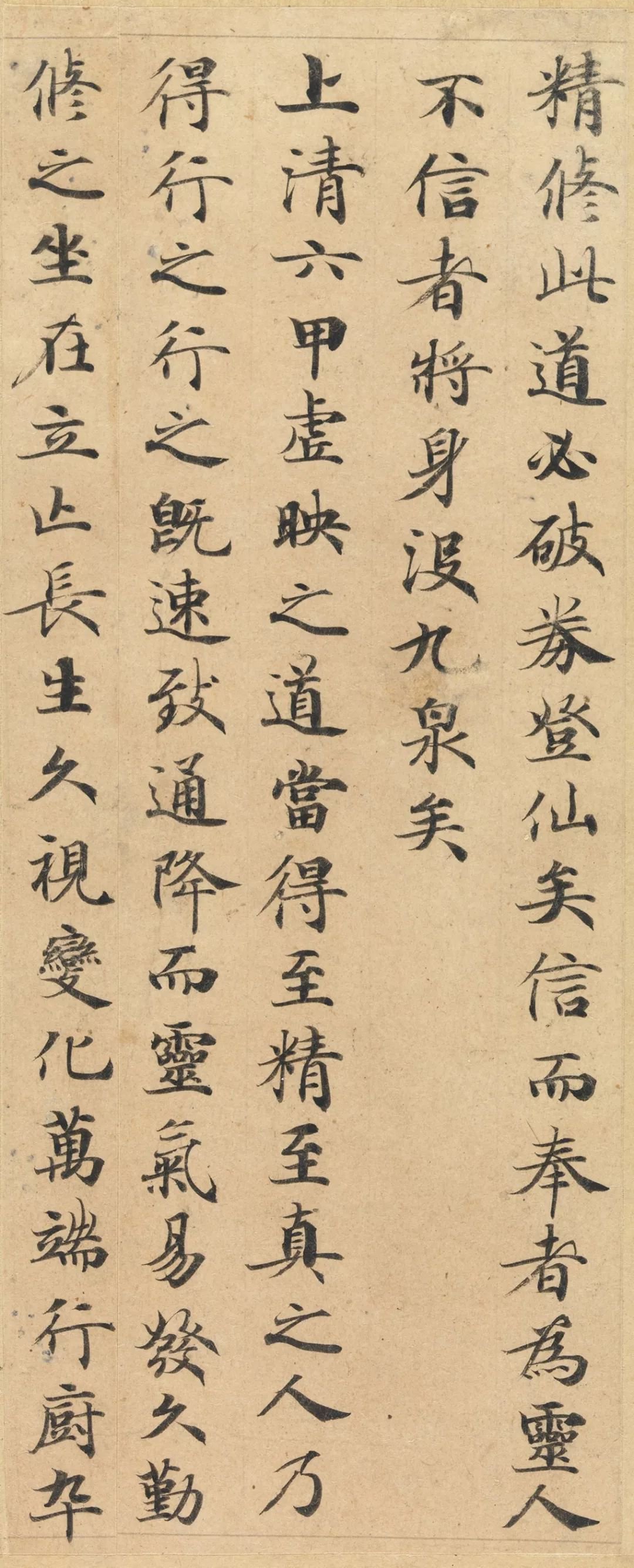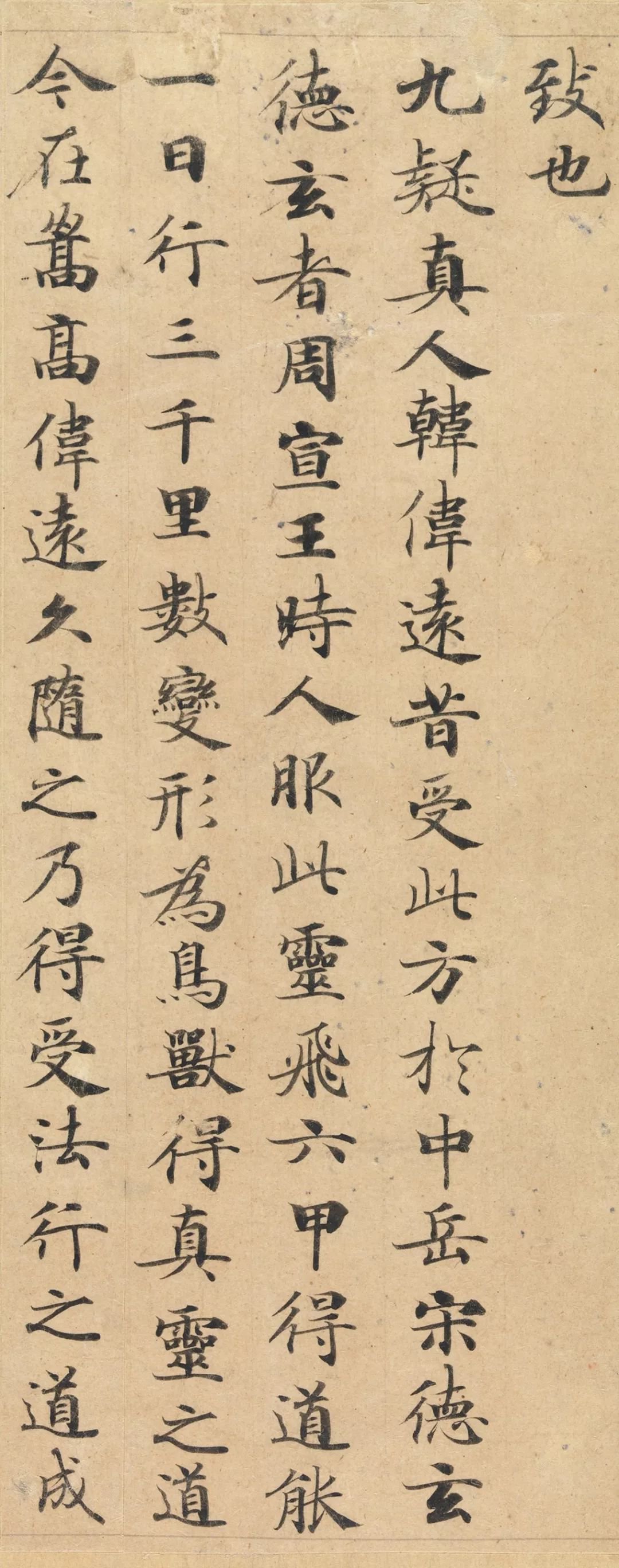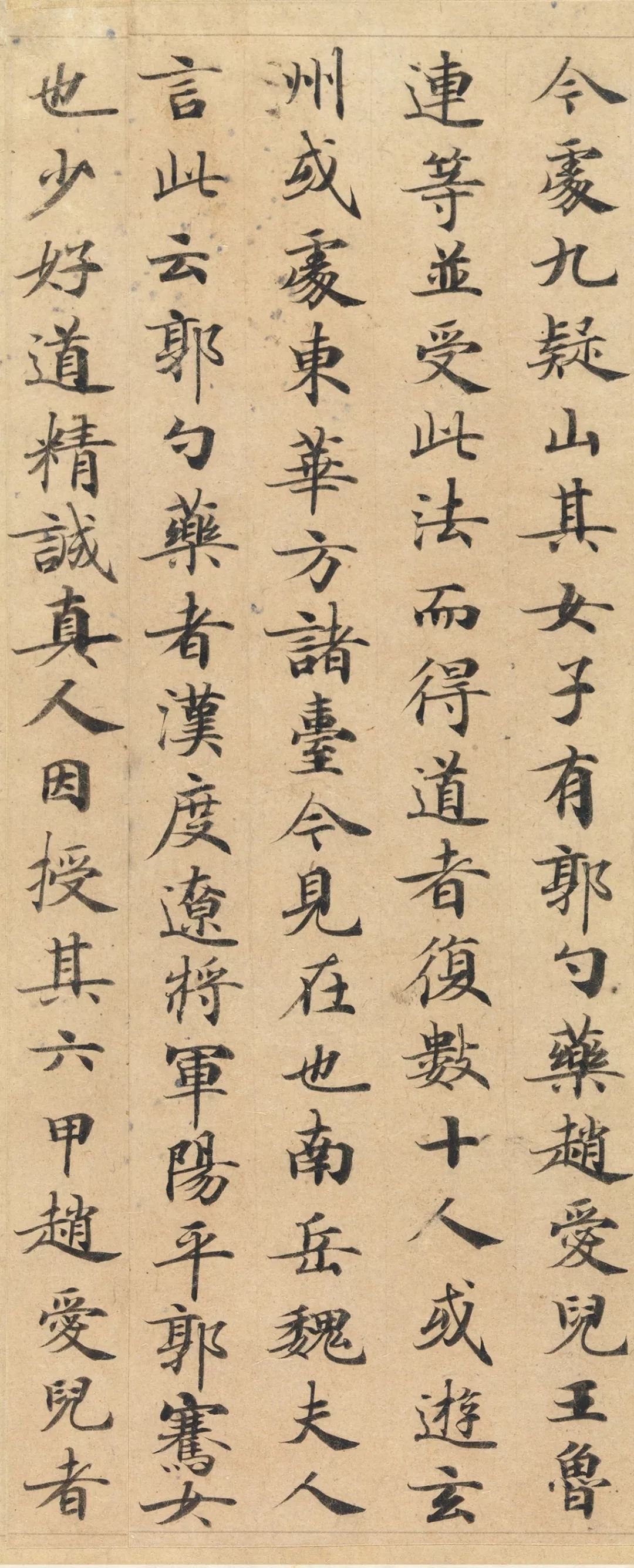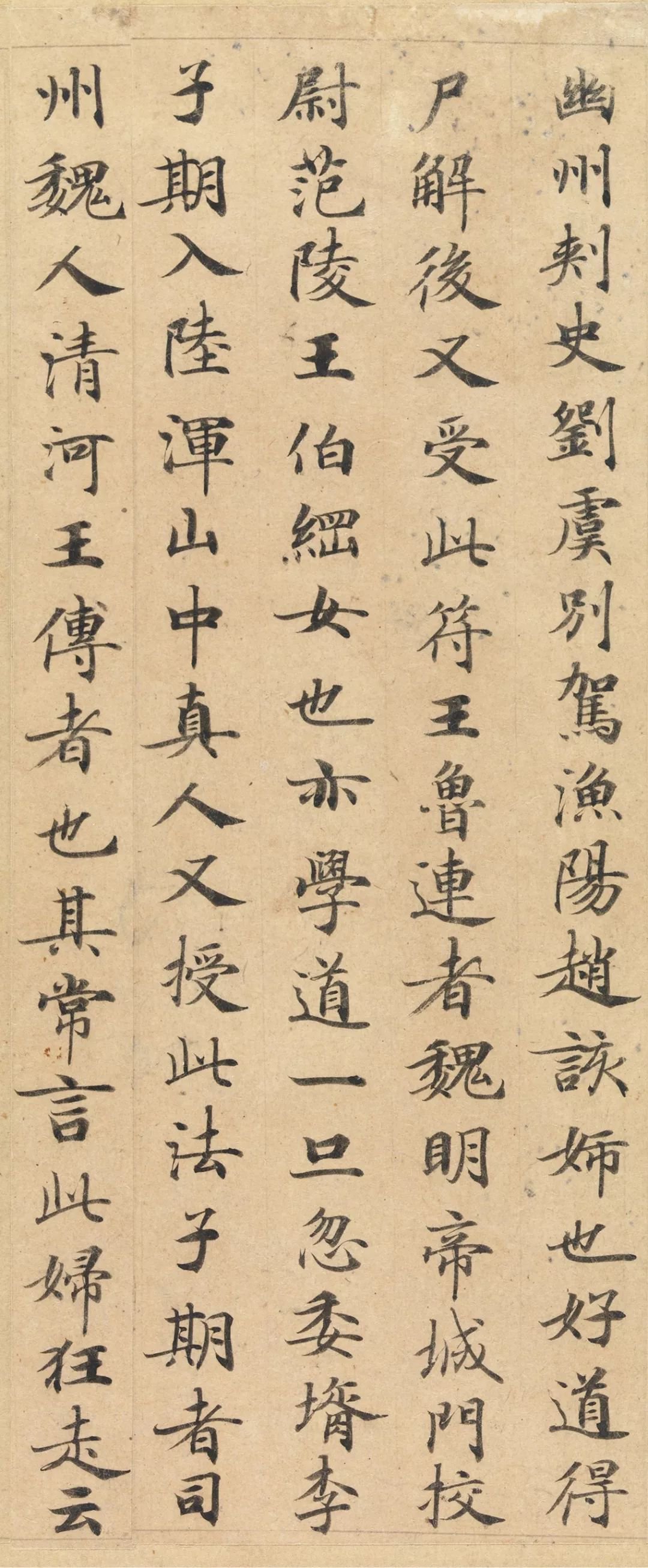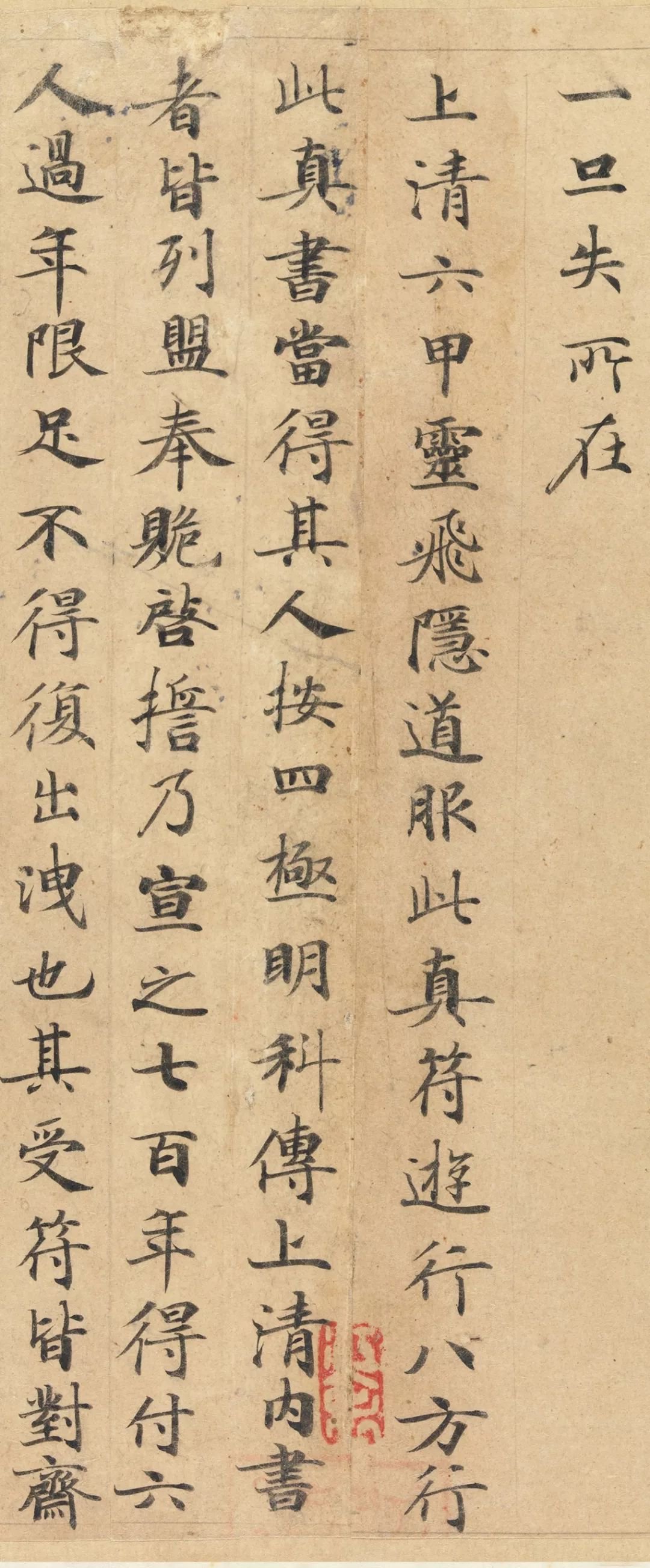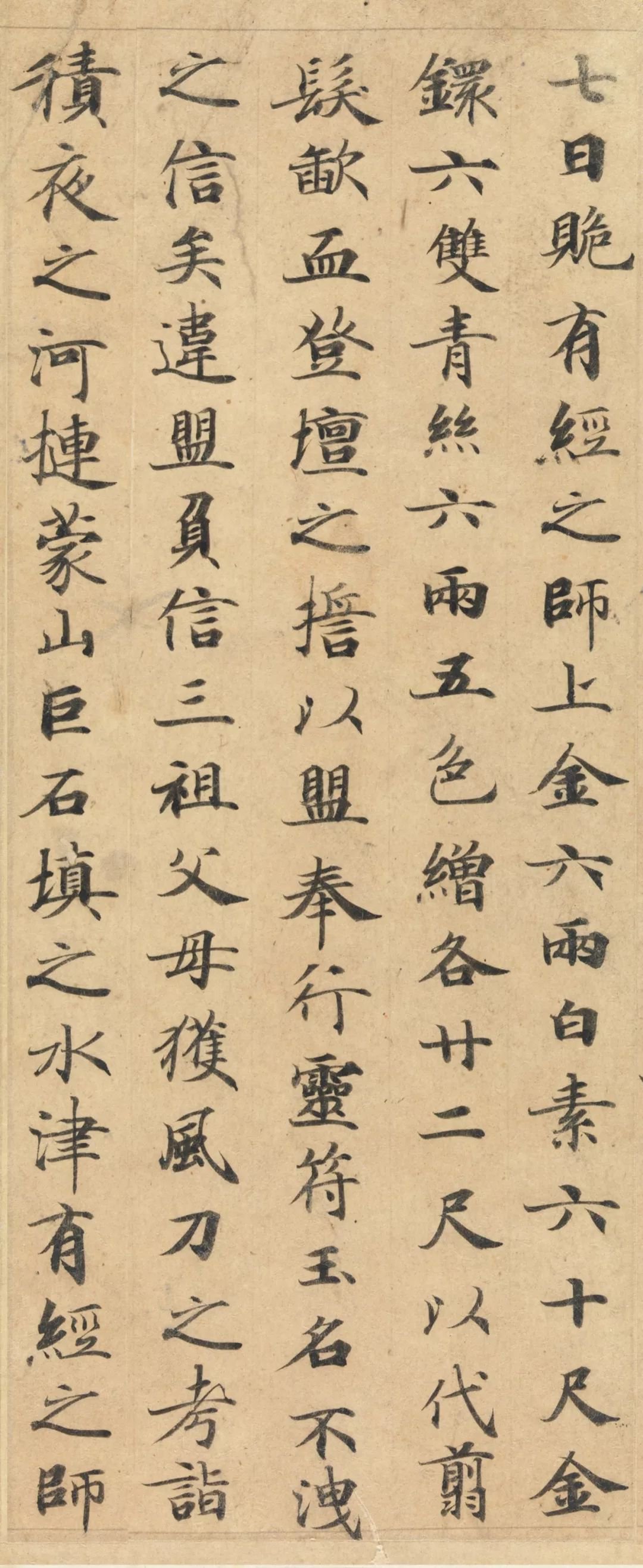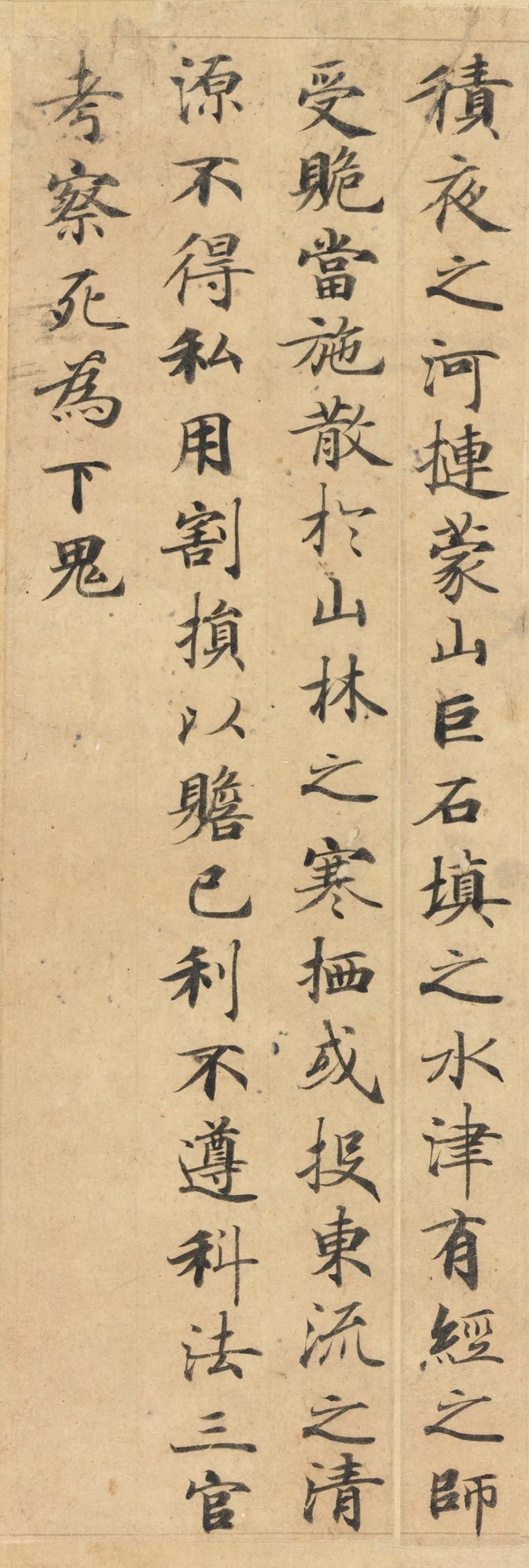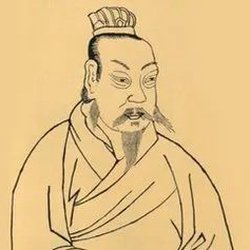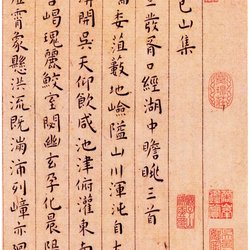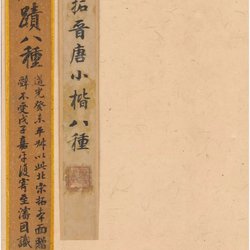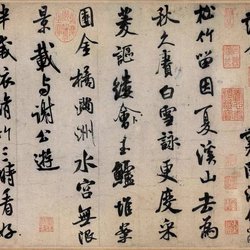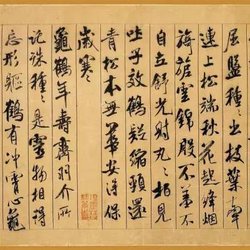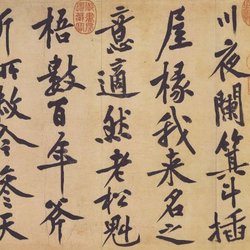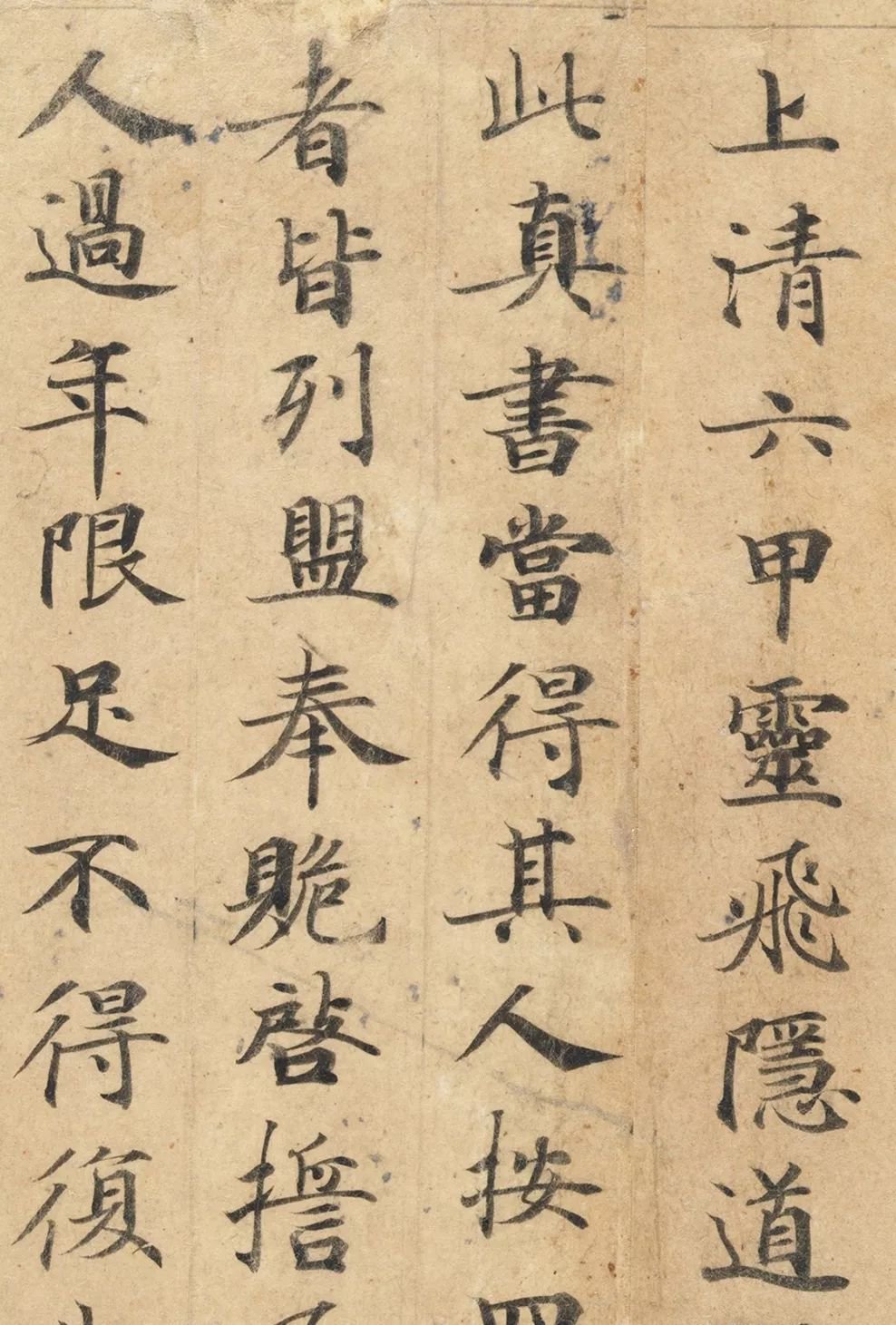

Tang (biography) Zhong Shaojing's regular script "Ling Fei Jing"
Former collection of Weng Tongsu, now in the Metropolitan Museum of Art
Copying scriptures, that is, Buddhist and Taoist scriptures, is a form of spiritual practice and the spread of religious beliefs. There are some rules for copying scriptures: special writing brushes, paper of specified sizes, vertical grid lines drawn on the paper, which are boundary columns, and the writing style is regular script, which is regular script. This Taoist scripture manuscript fully meets the above requirements, and its elegant and smooth writing makes it stand out among many hand-written scriptures. Professor Fang Wen’s appreciation of this collection is as follows:
This book was written in 738 on the orders of Princess Yuzhen, the daughter of Emperor Xuanzong of the Tang Dynasty (translation note: Princess Yuzhen should be the daughter of Emperor Xuanzong's sister, Tang Ruizong), and represents the highly sophisticated court calligraphy style of the prosperous Tang Dynasty. Writing in small regular script... the knots are well-proportioned, with horizontal and vertical hooks, and the writing is vigorous. The writing is made with long sharp edges, each stroke is clear and crisp, the writing is elegant and sharp, and the characters are straight and square, as if they are arranged in square boxes. From the structural analysis of each character, different strokes have different rules for using the brush, that is, the "moment" of the brush. Each stroke has a perfect form and writing method, that is, the "method" of the brush. Each character has its own meticulousness. The layout is staggered, natural and smooth, and is a representative work of the contemporary calligraphy style with relaxed characters and a calm mind.
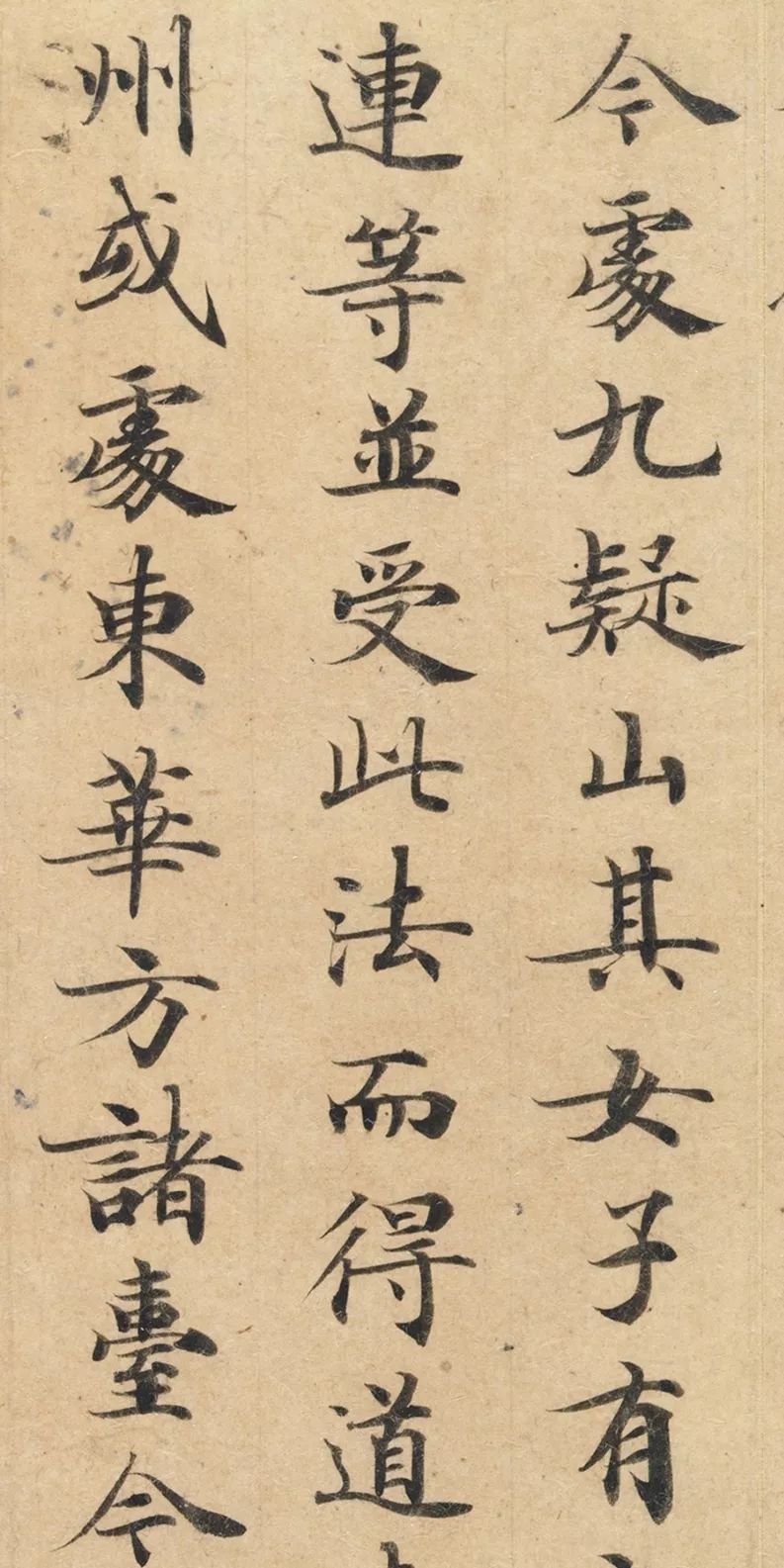
In the early 17th century, this scripture was collected by Dong Qichang (155-1636), an influential painter, calligrapher and theorist at the time. Dong Gong praised this album as one of the best examples of Tang Dynasty small regular script.
Traditional Chinese writing is usually arranged vertically and read from right to left. Each column is written from top to bottom, and each character also has a fixed order of strokes, following the principles of top to bottom and left to right. There must be an imaginary grid when writing in regular script, so even if different characters are different in number of strokes or may be complex and dense or simple and empty, each character occupies roughly the same space.
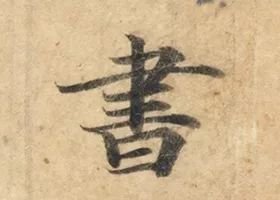
The character "书" above is an example of following the rules and practicing well to show the elegance and charm of regular script. The actual size of the calligraphy is only about the size of a fingernail, but each stroke is composed of starting, moving, and closing, and reflects subtle changes in the strength and direction of the stroke. As the length and thickness of the pen changes, these lines are rhythmic and integrated under the calligrapher's pen, showing a kind of calmness and stability hidden in the changes.
